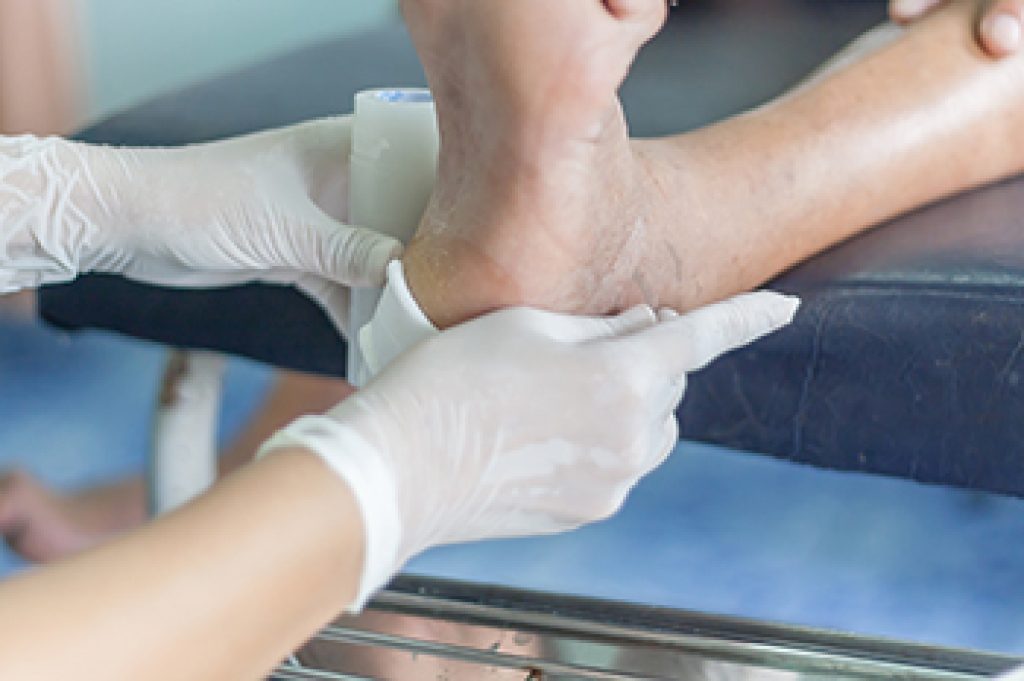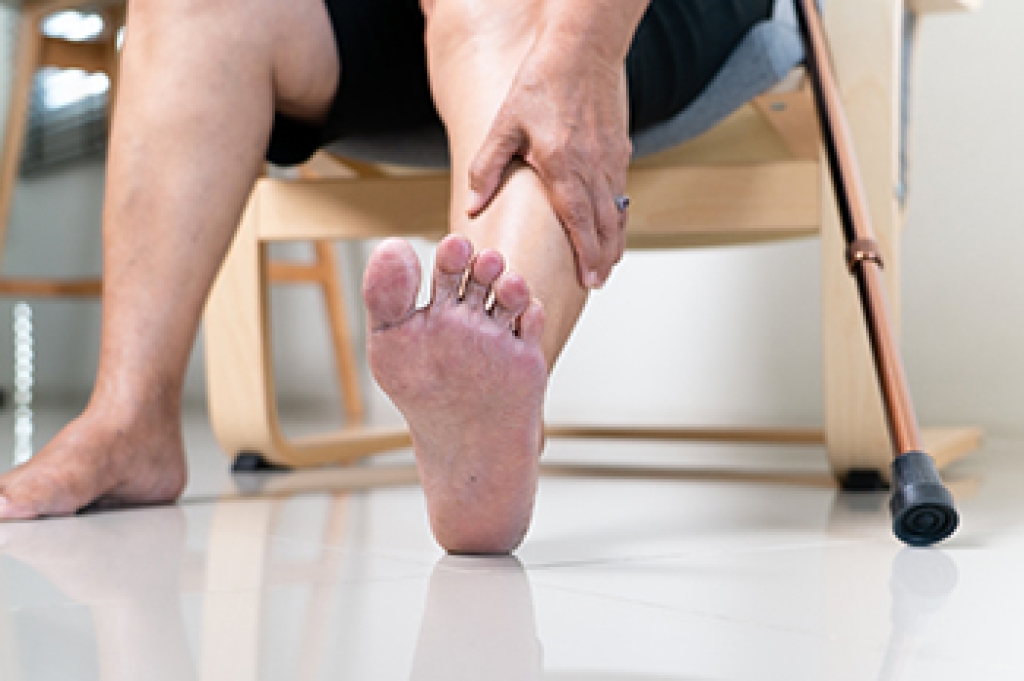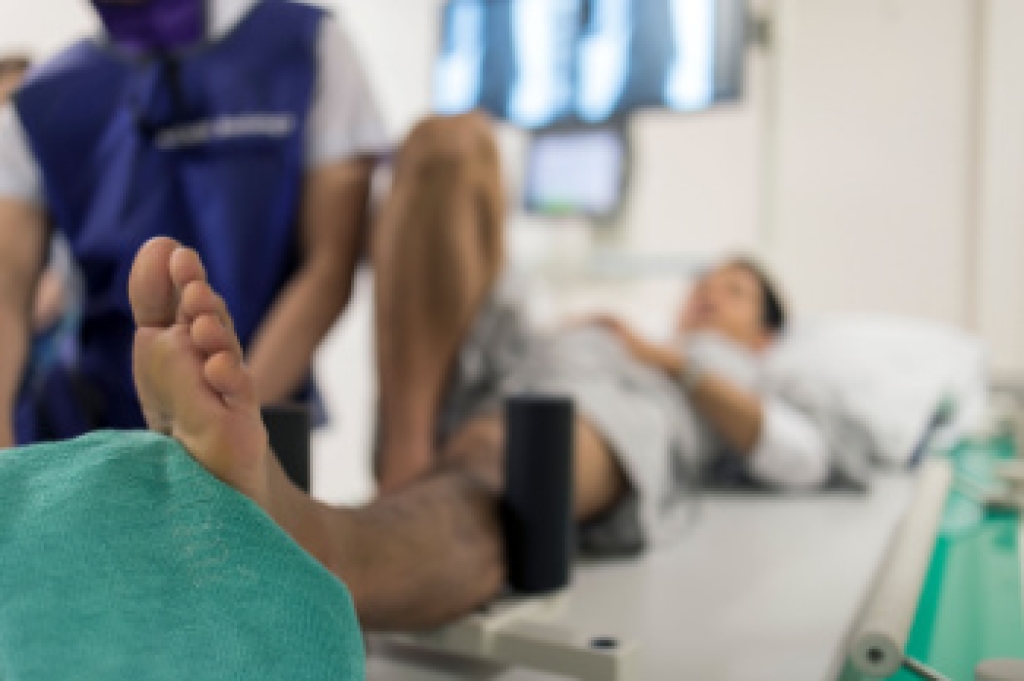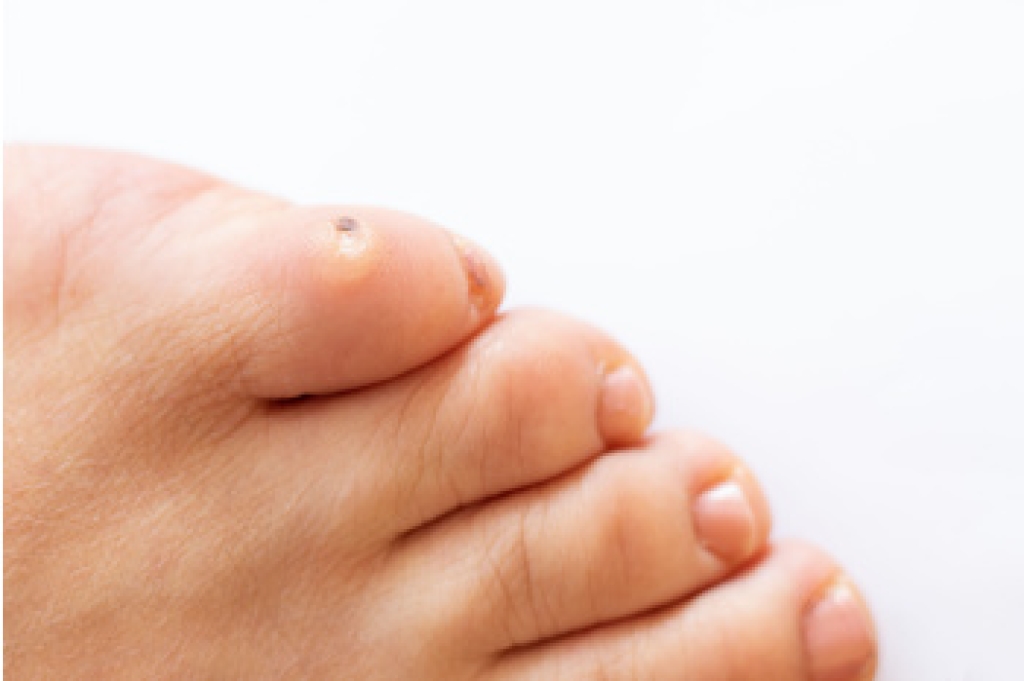Connect With Us
Blog
Blog
Understanding Puncture Wounds on the Foot

A puncture wound on the foot occurs when a sharp object penetrates the skin and creates a small but deep injury that can easily introduce bacteria. Common causes include stepping on nails, splinters, glass, or metal fragments, especially while walking barefoot or wearing thin-soled shoes. Proper management is important because these wounds can trap debris and lead to infection. Care often involves thorough cleaning, appropriate medicine to prevent infection, a tetanus vaccine if needed, and, in some cases, surgery to remove foreign material or treat deeper damage. A podiatrist can assess the injury, provide precise wound care, and monitor healing to avoid complications. If you have sustained a puncture wound on your foot, it is suggested that you promptly consult a podiatrist for safe and effective treatment.
Wound care is an important part in dealing with diabetes. If you have diabetes and a foot wound or would like more information about wound care for diabetics, consult with Darlyne Cange, DPM from Cange Podiatry, DPM, PA. Our doctor will assess your condition and provide you with quality foot and ankle treatment.
What Is Wound Care?
Wound care is the practice of taking proper care of a wound. This can range from the smallest to the largest of wounds. While everyone can benefit from proper wound care, it is much more important for diabetics. Diabetics often suffer from poor blood circulation which causes wounds to heal much slower than they would in a non-diabetic.
What Is the Importance of Wound Care?
While it may not seem apparent with small ulcers on the foot, for diabetics, any size ulcer can become infected. Diabetics often also suffer from neuropathy, or nerve loss. This means they might not even feel when they have an ulcer on their foot. If the wound becomes severely infected, amputation may be necessary. Therefore, it is of the upmost importance to properly care for any and all foot wounds.
How to Care for Wounds
The best way to care for foot wounds is to prevent them. For diabetics, this means daily inspections of the feet for any signs of abnormalities or ulcers. It is also recommended to see a podiatrist several times a year for a foot inspection. If you do have an ulcer, run the wound under water to clear dirt from the wound; then apply antibiotic ointment to the wound and cover with a bandage. Bandages should be changed daily and keeping pressure off the wound is smart. It is advised to see a podiatrist, who can keep an eye on it.
If you have any questions please contact our offices located in Glen Burnie and Ellicott City, MD . We offer the newest diagnostic and treatment technologies for all your foot and ankle needs.
Strategies for Foot Care in Seniors

Aging can affect the way the feet feel and move, and seniors often notice changes in balance, comfort, and stability as soft tissues lose elasticity and arches weaken. Joint stiffness, bunions, stress fractures, and changes in bone strength can make walking uncomfortable. This is especially true when shoes that lack adequate support or worn-down flip-flops place extra pressure on the toes and heels. Seniors are also more prone to conditions like plantar fasciitis and Achilles tendinitis as the arches flatten and the ligaments stretch. Regular foot checks help identify swelling, changes in toe alignment, and areas of irritation before they worsen. A podiatrist can assess gait, evaluate the health of the toes, ankles, and arches, and recommend treatment to protect long-term mobility and keep the feet functioning well. If you are an older adult experiencing foot problems, it is suggested that you make an appointment with a podiatrist for a diagnosis and treatment.
If you need your feet checked, contact Darlyne Cange, DPM of Cange Podiatry, DPM, PA. Our doctor will attend to all of your foot and ankle needs and provide you with quality treatment.
Geriatrics and Podiatry
When people age, some common issues that may occur are bone density loss, dry skin, poor circulation, and rough brittle nails. These issues may also affect your foot health if the necessary steps are not taken to alleviate the problems.
It is important to take care of your feet because feet that are injured or diseased can affect your overall health. Having painful feet hinders your ability to do daily activities or may decrease your willingness to do the things that you need to do.
Visiting Your Geriatrician
As we age, health problems become more likely, so it is essential to visit your doctor for check-ups to ensure that you are doing the best you can to take care of your health. It is recommended to check your feet frequently for any possible cuts, bruises, swelling, corns or any other irregularities.
Taking Care of Elderly Feet
Cracked or dry feet can be treated by applying moisturizer often. It is also important not to wear old socks because the older the sock is, the higher the possibility there will be that there is bacteria there. Wear fresh socks and make sure they fit properly.
Proper foot health means that you can have a more active lifestyle and you will not be bogged down by pain. Foot health also leads to good circulation, which is paramount for overall health.
If you have any questions, please feel free to contact our offices located in Glen Burnie and Ellicott City, MD . We offer the newest diagnostic and treatment technologies for all your foot care needs.
Preventing and Treating Stress Fractures in Active Feet

Stress fractures are small cracks in the bones of the foot or lower leg that often occur in runners, basketball players, or dancers due to repetitive impact, overuse, or sudden increases in activity intensity. They may not be immediately visible but can cause localized pain that worsens with weight bearing, swelling, tenderness, or bruising. Many individuals notice discomfort that improves with rest but returns during activity, making early recognition important. Stress fractures commonly affect the metatarsals, especially the second and third, due to repetitive pressure during jumping or dancing. A podiatrist can evaluate suspected stress fractures through a thorough physical examination and imaging, such as X-rays or an MRI, to confirm the diagnosis and rule out other injuries. Treatment may include activity modification, protective footwear, orthotics, or immobilization to allow proper healing. Early intervention prevents complications and ensures a safe return to activities. If you experience persistent foot pain after activity, it is suggested that you make an appointment with a podiatrist.
Stress fractures occur when there is a tiny crack within a bone. To learn more, contact Darlyne Cange, DPM from Cange Podiatry, DPM, PA. Our doctor can provide the care you need to keep you pain free and on your feet.
How Are They Caused?
Stress fractures are the result of repetitive force being placed on the bone. Since the lower leg and feet often carry most of the body’s weight, stress fractures are likely to occur in these areas. If you rush into a new exercise, you are more likely to develop a stress fracture since you are starting too much, too soon. Pain resulting from stress fractures may go unnoticed at first, however it may start to worsen over time.
Risk Factors
- Gender – They are more commonly found in women compared to men.
- Foot Problems – People with unusual arches in their feet are more likely to develop stress fractures.
- Certain Sports – Dancers, gymnasts, tennis players, runners, and basketball players are more likely to develop stress fractures.
- Lack of Nutrients – A lack of vitamin D and calcium may weaken the bones and make you more prone to stress fractures
- Weak Bones – Osteoporosis can weaken the bones therefore resulting in stress fractures
Stress fractures do not always heal properly, so it is important that you seek help from a podiatrist if you suspect you may have one. Ignoring your stress fracture may cause it to worsen, and you may develop chronic pain as well as additional fractures.
If you have any questions please contact our offices located in Glen Burnie and Ellicott City, MD . We offer the newest diagnostic and treatment technologies for all your foot and ankle needs.
What Is a Foot Corn?

A foot corn is a thickened area of skin that forms in response to repeated pressure or friction. A corn often develops on the toes or sides of the feet and becomes painful when walking or wearing tight shoes. Corns can be caused by wearing ill-fitting shoes, abnormal foot structure, or repeated rubbing against a shoe surface. Risk factors include spending long hours on your feet, wearing high heels, or having foot deformities that alter pressure points. A podiatrist can safely remove corns, address the underlying cause, and offer guidance on proper footwear and preventative care. A foot corn can be painful and can cause difficulty completing daily tasks. If you have this condition, it is suggested that you consult a podiatrist who can offer relief and prevention tips.
If you have any concerns regarding your feet and ankles, contact Darlyne Cange, DPM of Cange Podiatry, DPM, PA. Our doctor will treat your foot and ankle needs.
Corns: What Are They? and How Do You Get Rid of Them?
Corns can be described as areas of the skin that have thickened to the point of becoming painful or irritating. They are often layers and layers of the skin that have become dry and rough, and are normally smaller than calluses.
Ways to Prevent Corns
There are many ways to get rid of painful corns such as wearing:
- Well-fitting socks
- Comfortable shoes that are not tight around your foot
- Shoes that offer support
Treating Corns
Treatment of corns involves removing the dead skin that has built up in the specific area of the foot. Consult with Our doctor to determine the best treatment option for your case of corns.
If you have any questions, please feel free to contact our offices located in Glen Burnie and Ellicott City, MD . We offer the newest diagnostic and treatment technologies for all your foot care needs.
Blog Archives
- 2025
- 2024
- 2018

